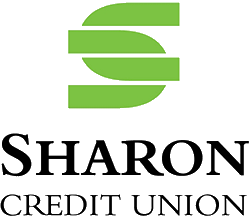Financial Reality Check at Mansfield High School
During the interactive financial literacy program Banzai, Mansfield High School personal finance students are faced with a number of realistic financial life scenarios.

Originally posted on thesunchronicle.com
As part of the program, students learn about saving for college, paying credit card debt, paying everyday living expenses, dealing with overdraft bank account fees and living within their means.
Those lessons are taught through a life scenarios booklet that provides students a list of transactions that each student must account for in conjunction with an online program.
“It was a great lesson for my students because it only took a few days to go through, and it gave my students a lot of opportunity to learn about budgeting and practice it in different ways,” Mansfield High School business and technology teacher Jacqueline Prester said. “It also came with a pre-test and a post-test to test their progress to see how they have improved throughout the lesson.”
Prester was one of the first educators in Bristol and Norfolk counties to take advantage of the opportunity provided by Sharon Credit Union to integrate the financial literacy program Banzai into her classroom lessons.
“I’ve been using the program for a few years now,” Prester said.
During the past school year, more than 200 of Prester’s students had the opportunity to participate in the Banzai program.
Sharon Credit Union began sponsoring the middle and high school-based program for schools in both Bristol and Norfolk counties years ago as a way to interact with the schools in their areas and as a way to encourage financial literacy within education.
“It’s been a great relationship both with Banzai and getting the teachers using the program” Sharon Credit Union corporate trainer Robin Burns said.
Sharon Credit Union has sponsored the program for about 25 educators, including Prester, allowing the program to exist in about 16 schools, Burns said.
At the start of the Banzai lesson, each student is provided with a copy of a check stub. The students are required to go through the life scenarios and make financial decisions and account for the purchases listed in their booklets using the money issued to them through their check stubs.
“It was nice for them to see the money coming in in one big chunk and have to divvy it out into smaller categories to make sure they paid for all the different things they have to pay for,” Prester said.
When students complete the life scenarios lessons and the pre-test and post-test, the program continues with an exercise called “The Game” that puts students through a series of life activities and budgeting and saving with a goal for each student to save $2,000 for college tuition.
Prester said the thing that she appreciates most about The Game is the freedom it gives students to make their own financial decisions, so they can see how their decisions could be different from their classmate’s decision.
“It’s good because it does give them options. If their car breaks down, they have to decide whether to repair it, let it ride or get a new car,” Prester said. “It’ll give them a lot of different options to choose from, and they have to figure out what’s best for their own situation.”
Prester believes that programs such as Banzai are important to incorporate into the classroom experience because it will make students more aware of how to handle finances when the time arises to do so.
“I think just giving the exposure to what budgeting is all about and realizing they need to live within their means is something that a lot of adults can’t do, so if we can help students understand that theory while their in school, they’ll live that theory when they’re out on their own,” Prester said.
Teachers interested in using the Banzai program can visit teachbanzai.com or call 888-8-BANZAI.